Eat Eat Eat for Greek Easter
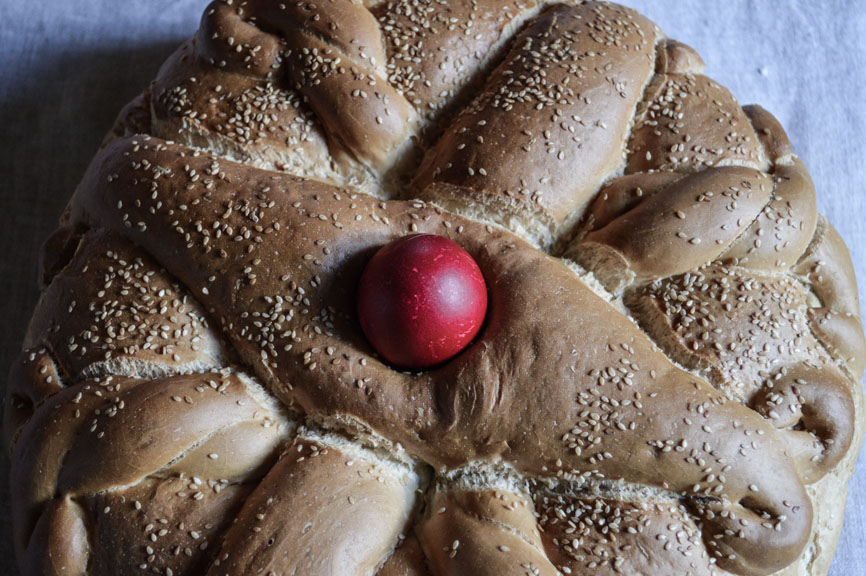
“In Greece there are no rules, if you want to eat cake now for dinner, you can have your cake!” exclaimed our new friend Shlomo.
Music to my ears.
What I had originally thought were Greek clichés exaggerated for the sake of movie goers and entertainment turn out not to be overblown clichés at all. It really is all about food, everyone really is Nikos or Yiorgos (ok that is a slight exaggeration), everyone smokes everywhere, there is Greek dancing after big meals and there is definitely raki to wash it all down. Everything is also about 4 hours late. It only takes a couple of days to get on “Greek time” – breakfast at 12, lunch at 4 and dinner at 11. There were a few culinary surprises – the presence of french fries at almost every restaurant table and the love story between contemporary Greeks and freddo cappuccino.
From the moment we arrived in Ioannina, Greece from the Albanian border, we were welcomed with open arms and taken care of completely by Nikos M., one of Nico’s friends from the School of Oriental and African Studies. Knowing our interest in food, Nikos M. had arranged for us to spend an authentic Greek easter with the Papadopoulos clan in the mountain region of Ioannina in a small village called Terovo. Assuming we would find heat and sun once we crossed into Greece, we instead drove up a narrow winding mountain road barely visible through the fog to a small hamlet for lunch. Any steep drop in air temperature however was greatly contrasted by the incredibly warm reception we received from our gracious hosts. The Papadopoulos clan took us in as one of their own, taking us through the tradition of Greek Easter and opening their home to us. After three rakis we managed to remember everyone’s name and we are incredibly grateful for the experience we have had and the new friends we have made.
It is difficult to capture the kindness we received and the diversity of emotions we felt in a single post, so click here to immerse yourself fully in the soundtrack of our short Greek film.
Now the Greeks take Easter very seriously, it is a time for family to come together and to eat eat eat while respecting the traditions dear to their hearts. It is an intensive few days, most people migrate for the weekend to join friends or family somewhere in the countryside for the big feast with celebrations and rituals starting on Good Friday until Easter Monday. In terms of family celebrations, it reminded us most of our Christmas, though it all seemed so magical that most of the time I felt like I was in a greek movie production.
Beyond being able to eat cake for dinner, one great aspect of eating greek style, is that you often get to share dishes, very much like Chinese cuisine. It is not about ordering one big plate and consuming it by yourself, but digging in to every dish and savouring a mix of flavours. Guaranteed anti-boredom for your palate. This also means there is often one lonely potato chunk, tomato slice or bean left on the plate which everybody is too polite to finish, but Nico decided he would be the one to take care of that last piece whenever it occurred.
On friday afternoon, our eating began. Since it was before actual Easter sunday, you are not supposed to eat meat, to compensate we got fried calamari instead. Not a bad deal! This comes with all the trimmings, delicious beans and spinach in sauce, tzatziki that tasted better than any I have had before, salad with olives and the ever-present patatas (french fries). I could say there was a quest to find the best french fry in the region, but who needs an excuse to eat more fries (or chips if you prefer)?
Food and religious rituals intertwine over the weekend with the first Orthodox ceremony starting on friday night. The tiny village of Terovo was lit up by a procession with red candles – symbolising the blood of christ on the day of his crucifixion. Ten minutes later, everyone turned to the usually deserted village corner bar, sending the waiters bustling to get big plates of patatas to the cold and hungry families.
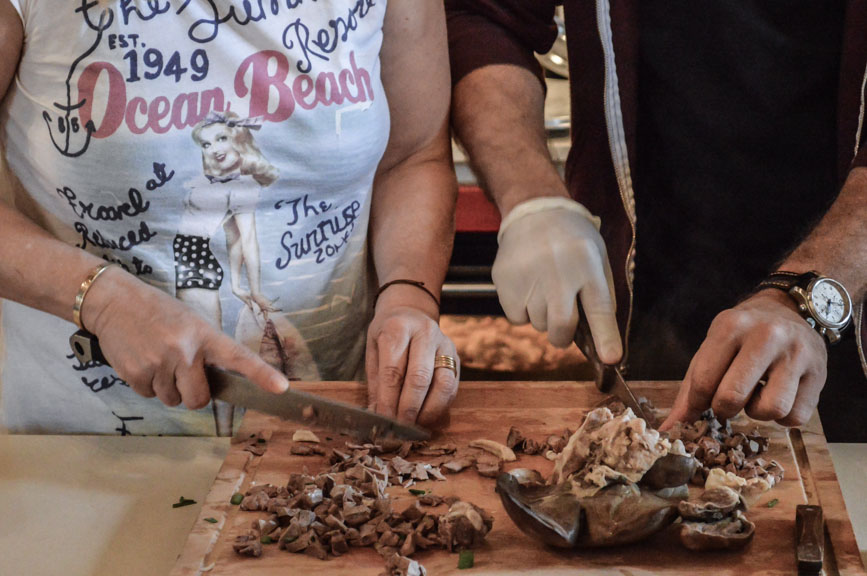

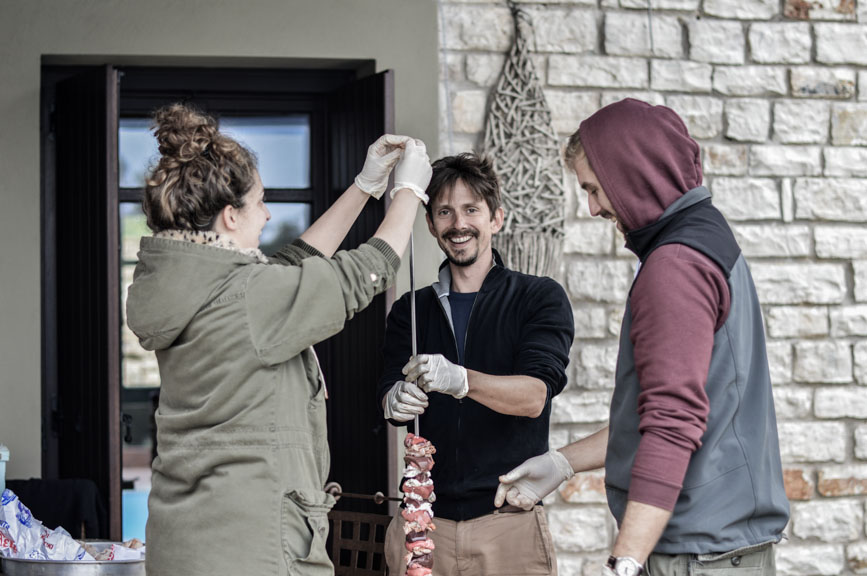
Saturday is a day of food preparation in anticipation of the big sunday feast. Our head chef Martina Papadopoulos graciously lets us into her kitchen, teaching us the basics of the sunday feast. Greek Easter is all about the lamb. Nothing goes to waste as the entire animal is used for dishes in the run up to the big spit-fire roasted animal. Offal such as liver and some part of the lungs are used for the saturday night after-mass soup – Magiritsa (Greek: μαγειρίτσα) and intestines and stomach lining are used for the much loved or much hated Kokorec.
It is impressive that her two sons/sous-chefs – Nikos P. and Lambros P. have picked up her love for cooking and handle the internal organs with ease as they clean and chop side by side. We are determined to learn them too. We begin with Gardubakya which involved tightly wrapping the cleaned-out Edera (intestine) around the Bolya (stomach lining) to then be roasted in the oven with salt, pepper, oregano, olive oil and lemon. We push on to Kokorec, something consistently mentioned in menus and signs from Albania to Turkey – a huge skewer of liver, heart, lungs and any other edible offal wrapped in bolya and again in edera. Not dishes for the faint hearted, but a lesson in sustainable eating. All these are wrapped in aluminium ready to be cooked the next day.
Officially it is not feast day yet, but that does not mean food is lacking. Following Lambros P.’s breakfast mantra of “eat, eat, eat”, we snacked all day on homemade cakes, mini ribs, bread and feta, chocolate eggs, ham and cheese toast and anything else lying around.

Christos Anesti – Χριστός Ανέστη (pronounced khree-STOHSS ah-NES-tee)
We drive down to the Old Castle of Ioannina for the Saturday midnight mass, the one which celebrates Christ’s resurrection, this time with white candles. The old church is busy with the hushed crowd waiting outside to light their candles. Traditionally, the light exits the church and everyone passes on the light of christ to each other, you are supposed to carry it all the way to the safety of your home without extinguishing the flame. It is a beautiful sight as the previously dark exterior is slowly illuminated with little flames and wide smiles in the crowd as their candle is lit by their neighbour for another year.
We head home with our candles and the Magiritsa from the afternoon is ready for our late dinner. A soup consisting mainly of liver and infused with dill, yoghurt and lemon, it was originally meant to prepare your stomach for the big carnivore feast on sunday after a month of fasting. For those who could not stomach the offal, there was thankfully a delicious mushroom alternative. We are also introduced the the easter egg game – a basket full of green and red hard boiled eggs await the challenge. The aim is to hit your opponent’s egg and crack it without breaking your own shell, there are tricks and cheats, but this involves life-long training to perfect.
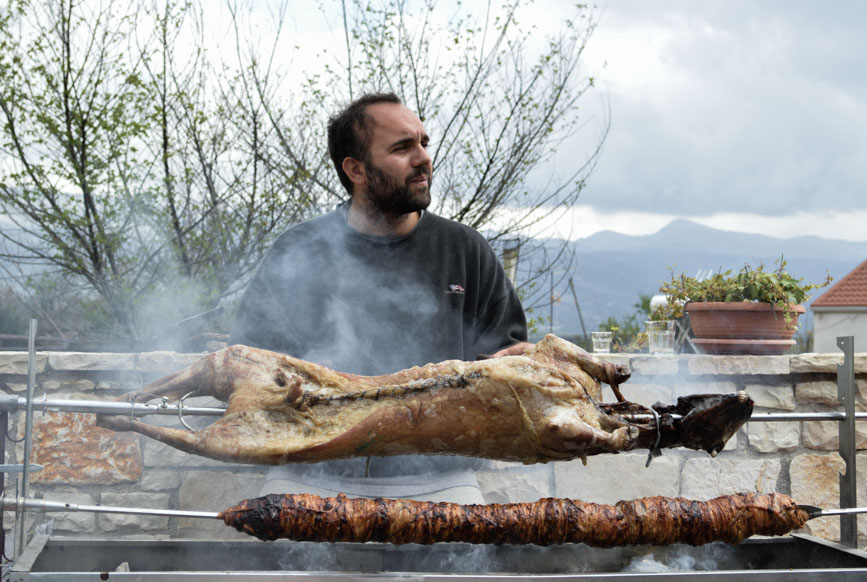
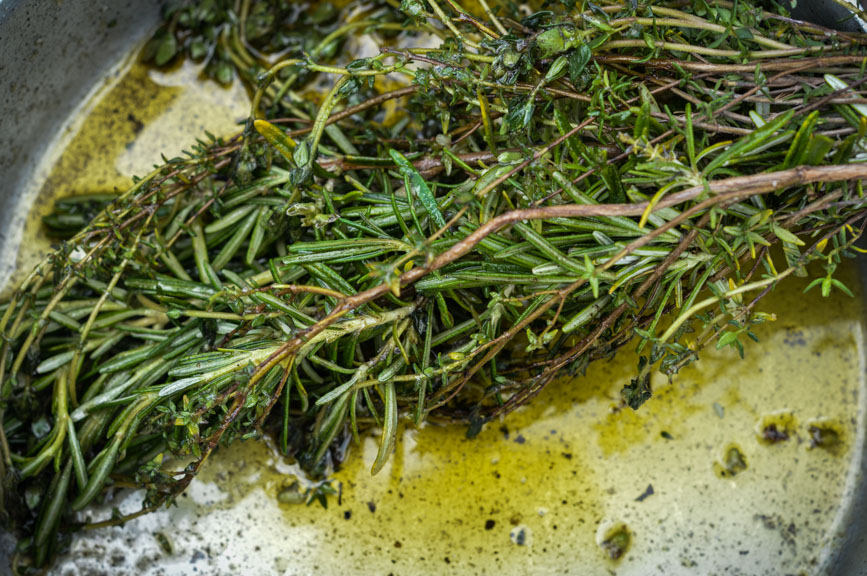
Happy Easter – Καλό Πάσχα (pronounced as KA-lo PAS-kha)
The big day has arrived. The feast that everyone has been waiting for. There is something in our cultures that seems to translate across borders when it comes to grilling meat. While women often dominate the kitchen when it comes to home cooking, when there is a piece of meat and an open fire, men rule. There was no exception here.
The lamb has been spinning on the fire since morning under the eldest son Nikos’ watchful eye and the Kokorec is slowing browning next to it. The Gardubakya are in the stone oven together with the goat as one beast would not be enough for this feast. The ladies are preparing the accompanying salads in the kitchen, where the big question of the day is lemon or vinegar dressing, think the consensus was definitely lemon.
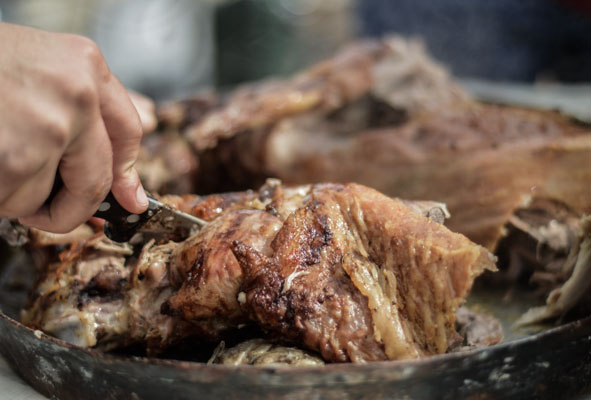
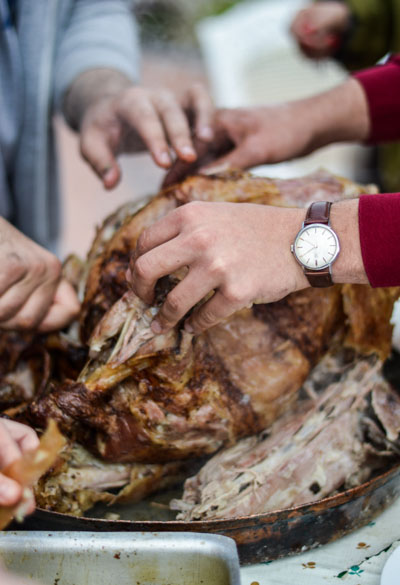

We continue with our greek movie theme, with rebetiko playing in the background on a retro radio, the sun finally shines through the thick clouds as the lamb gets closer to being golden brown. It is prepared with great care, occasionally getting a full body brush of rosemary dipped in olive oil. The gardubakya and kokorec form the basis of the appetizers, it is definitely an acquired taste, but am proud to have tried it. It is truly an enjoyment of the good things in life as everyone drinks and lines their stomach with salad, bread, roast potatoes and cheese until finally the goat emerges perfectly crusted from the oven and once again with no stuffy formalities, everyone rips into the splintering hot flesh with their bare hands. It is succulent and delicious, enough to curb our hunger before the star of the show is lifted off its dancing pole. Just as everyone is approaching full stomach capacity and plates are emptying, the lamb is ready. It is everything we expected and more, fragrant, tender, juicy, it is impossible to believe that all that was added was some salt, pepper and rosemary.
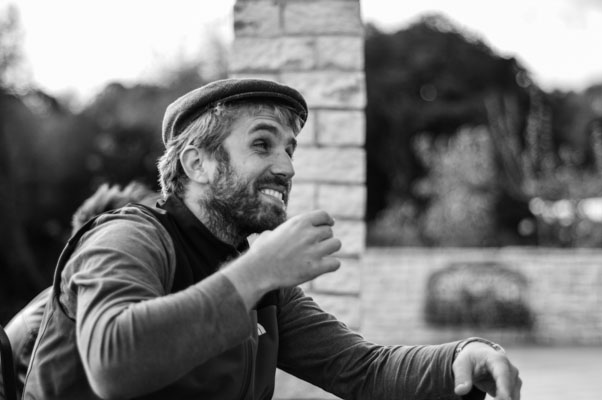
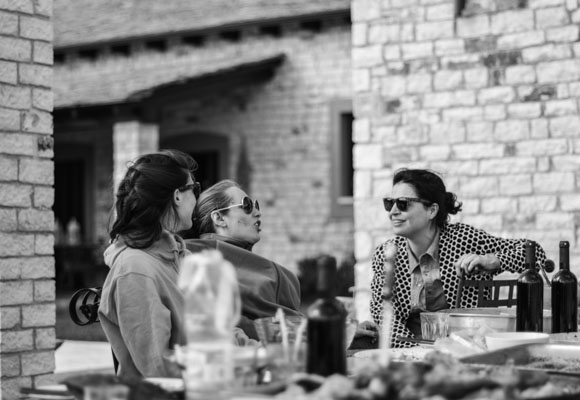
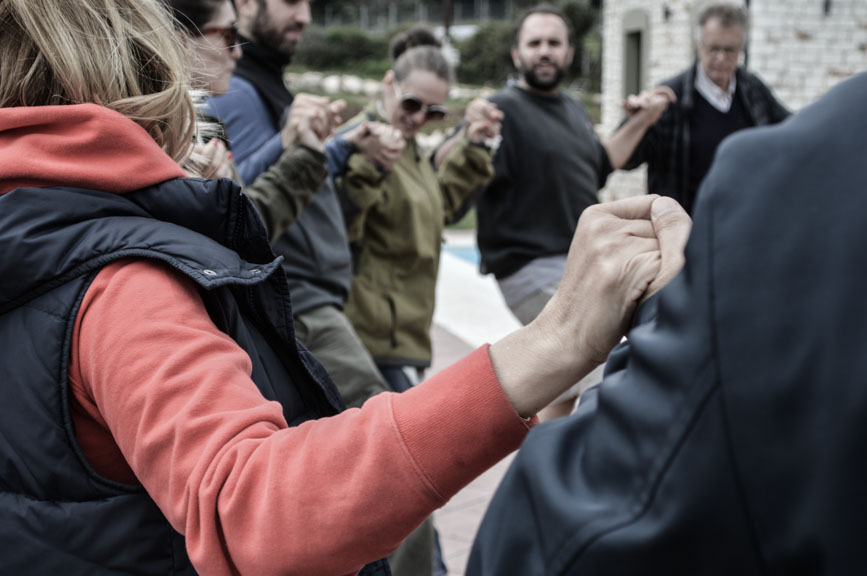
Hours of preparation are devoured in seconds and to top it all off a big bowl of profiteroles materialise, perfect for everyone to scoop in and proceed to relax in a semi food coma. There is dancing, more raki and necessary naps to be taken. Easter Sunday slows to a stop and wow what an Easter.
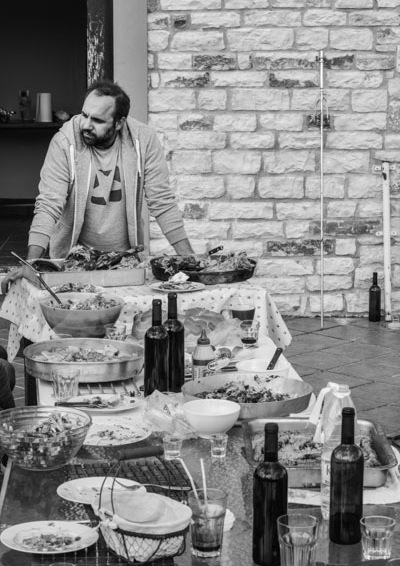
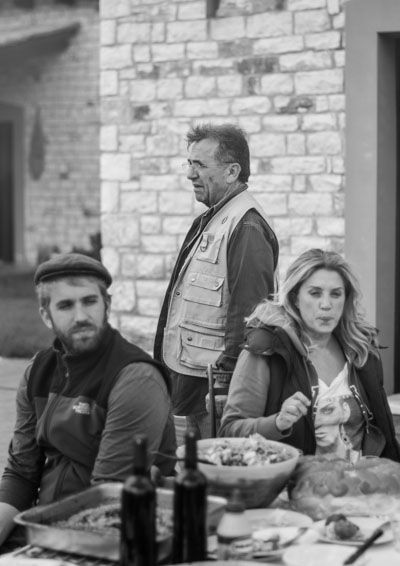
The food adventure continues on Easter Monday. The day where most people are commuting back to their homes, we take it easy and head back to Ioannina for a little treat. We are in for an unexpected culinary bomb at a small non-descript cafe called Select. The old lady baking turns out to be an institution, churning out Bougatsa – Μπουγάτσα [buˈɣatsa] daily for most of her life. Supposedly the name comes from the Turkish Pogaća which shares the name with the Italian Foccacia (from the ancient Roman panis focacius). Bougatsa are thin sheets of pastry, here served only two ways – sweet and savoury. A savoury cheese and béchamel mix layered between crispy delicate pastry and sweet semolina custard slightly caramelised at the edges.
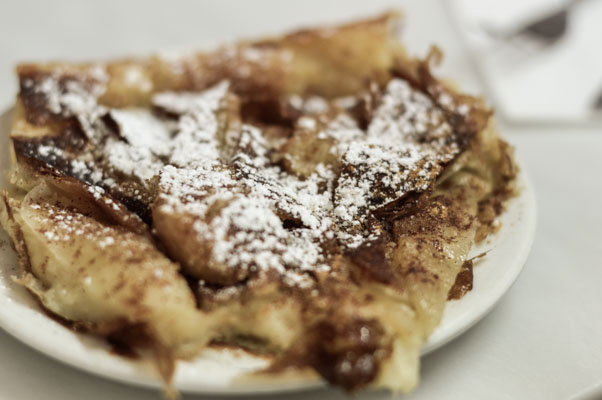
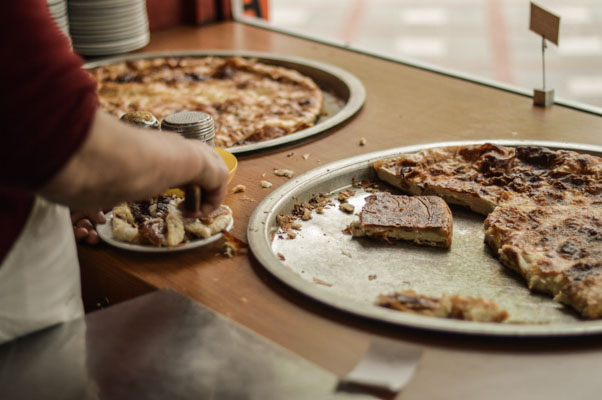
Oh. My. God. I could have eaten twenty of those I think. The recipe is guarded preciously by the old lady and urban legend has it that she will take it with her to the grave as it is not to be shared even with her children. Hands down one of the best things we ate in Greece.
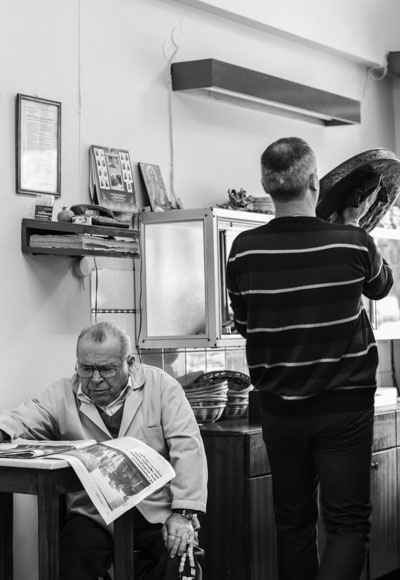

We are informed that there is a last surprise waiting for us. What else could this amazing region offer? The Spring of Louros. To top off the incredible weekend, along the road to Athens there is a little hidden path to a small lake that looks like what I imagine the Plitvice Lakes in Croatia look like. Turquoise and transparent surrounded by green vines and trees. Absolutely breathtaking and right next to another culinary pitstop. The river trout.
Along the Spring of Louros, they have set up tables by the riverside, where you can have your pick of smoked, grilled or fried trout. We try all three and all three are delicious. I keep pinching myself to see if this scene was real or if I actually did end up in a greek movie. It is certainly a movie I would like to watch again.To balance a weekend of meat meat meat, we complete it with fresh fish and more wonderful company.
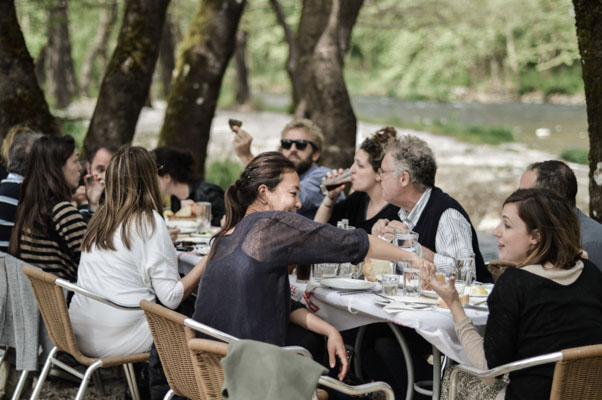
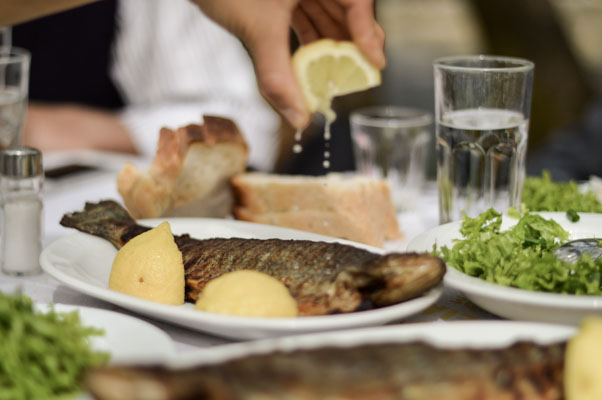
Heading to Athens late monday night, we proceed to discover the Athens night scene over the next couple of days. Nico went out for a night on the town with the boy’s clan and we ended up celebrating our last night there before the Greek islands with a stylish send-off and farewell to Nikos M. full of rebetiko music and more food.
Our Greek Easter adventure could not have been more welcoming, more eye-opening or more palate-provoking. We can only thank our excellent hosts a million times over and hope that one day we can repay the experience with a culinary adventure for them of our own.
ευχαριστώ! Nikos M., Chryssa, Martina, Leandros, Lambros, Nikos P., Christine, Shlomo, Marietta, Elia, Micaela
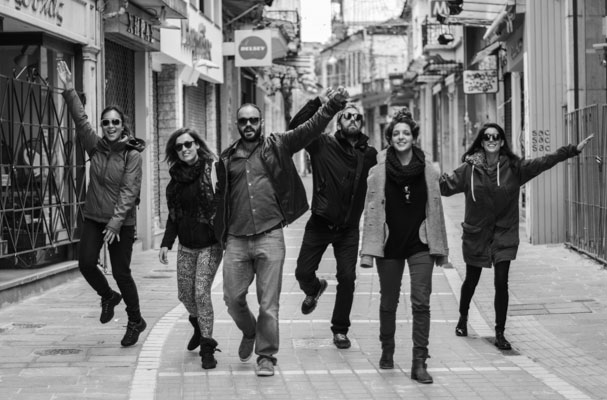







2 Comments
Chris
April 4, 2016Nice work! Less than a month left for this year’s Easter. There is a great sweet they make in Crete for Easter. It’s called “kalitsouni”.
Nico & Gabi
April 8, 2016We would love to spend another Easter in Greece, especially Crete, there seems to be a treasure trove of special foods there 🙂